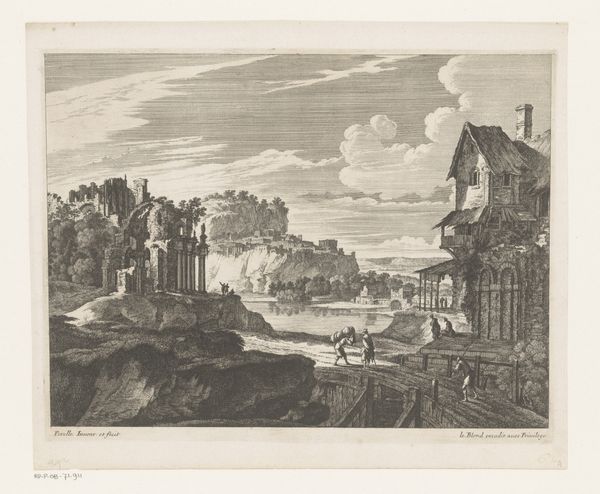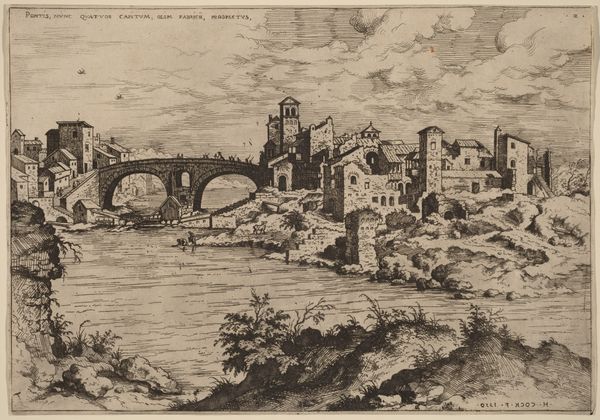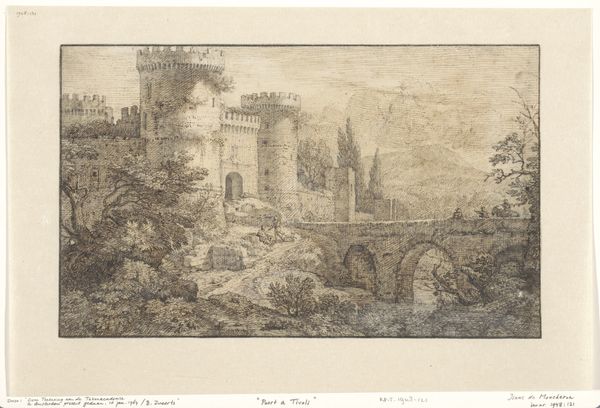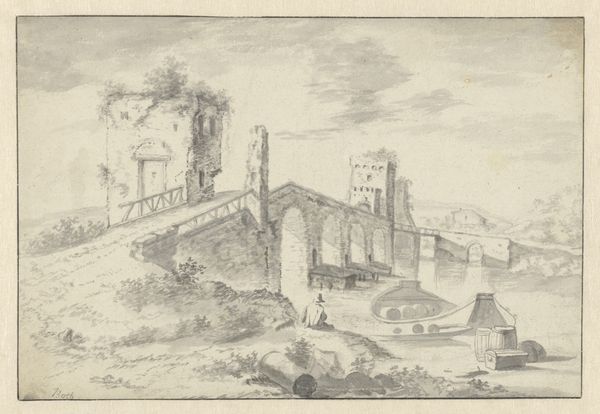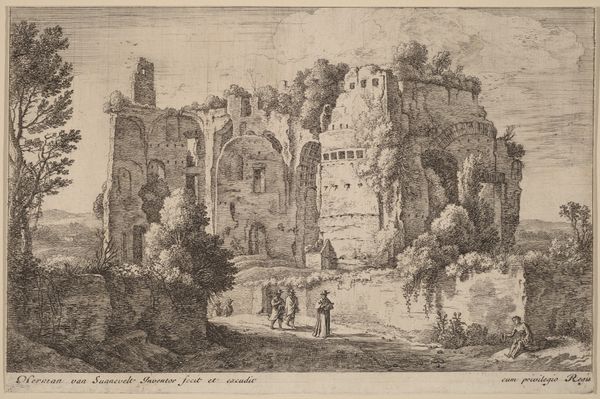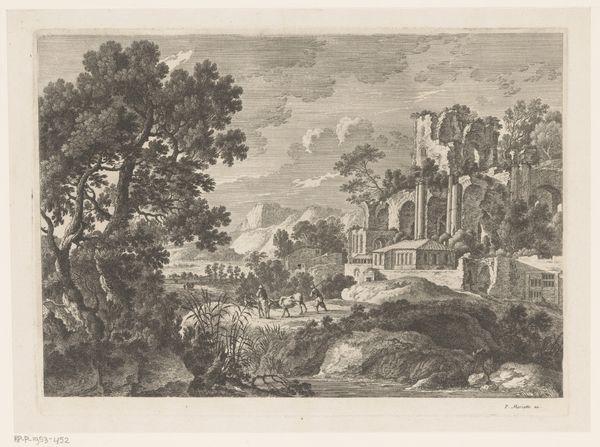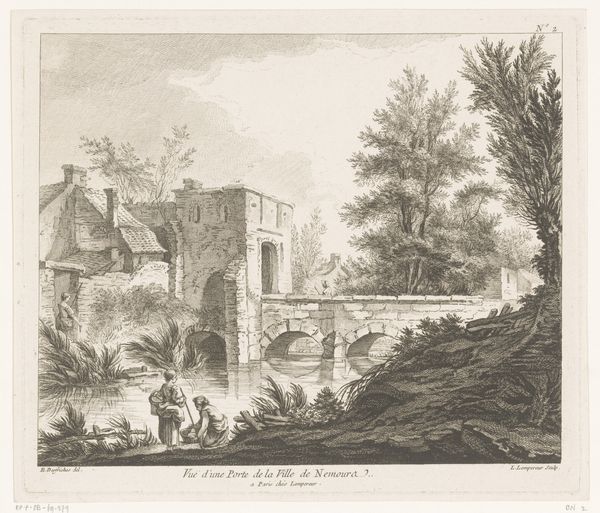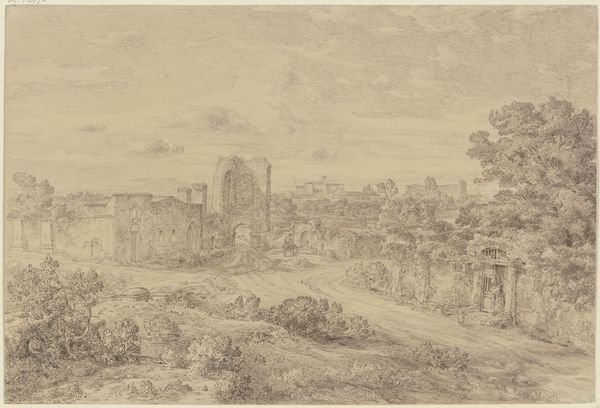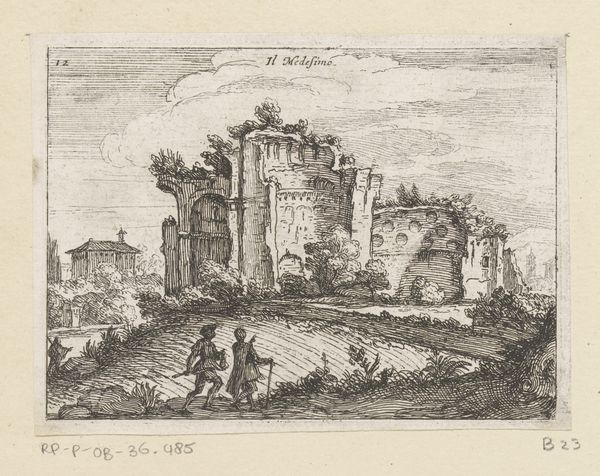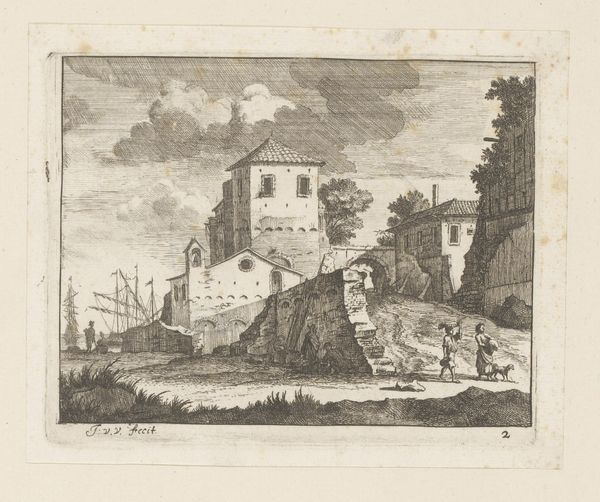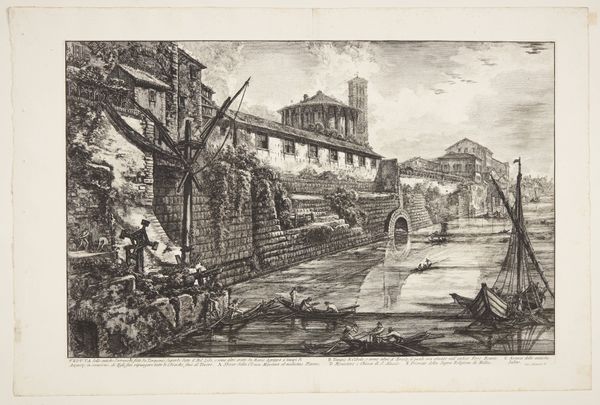
View of Tiber Island with the Church of San Bartolommeo 1775
0:00
0:00
print, etching, engraving
# print
#
etching
#
landscape
#
cityscape
#
italian-renaissance
#
engraving
Dimensions: 475 mm (height) x 715 mm (width) (plademaal)
Curator: I’m immediately struck by how…theatrical this feels. Like a stage set designed to evoke a specific, perhaps even slightly melancholy mood. Editor: Precisely! We’re looking at Giovanni Battista Piranesi’s "View of Tiber Island with the Church of San Bartolommeo," crafted around 1775. He used etching and engraving techniques here, primarily. Look at the meticulous lines, the deliberate contrasts! Curator: The textures, oh, they're wonderful. I feel like I could reach out and touch the crumbling brickwork of that embankment. But tell me more about Tiber Island, what does this island signify? Editor: Ah, Tiber Island! It has been associated with healing and medicine since ancient times. In Roman mythology, it became linked with the cult of Aesculapius, the Greek god of medicine. The church depicted, San Bartolomeo, stands where an ancient temple to Aesculapius once stood, embedding the Christian church within the older pagan symbolism of health and renewal. Curator: So, visually, Piranesi positions the Church as a continuation of ancient rituals! Do you think he’s drawing a direct parallel, suggesting a kind of unbroken chain of spiritual significance? Editor: Indeed. And observe the figures in boats; they are diminutive, almost lost amidst the architectural grandeur. Their vulnerability accentuates the dominance of Rome’s enduring structures, mirroring humanity's transient existence against the backdrop of civilization. Curator: It's more than a simple landscape, isn’t it? It's a statement on time, faith, and the cyclical nature of civilizations. Perhaps, on the burden of history itself. Editor: Yes! Piranesi masterfully layered meaning through visual allegory. He was less concerned with topographic accuracy, than communicating a deeper sense of Rome's mythical and emotional resonance. Curator: Considering how Piranesi saw himself, I believe he intended the symbolism to blend together. It wasn't just about presenting something literal; it was also about infusing an emotive experience into a picturesque moment. Editor: And that, perhaps, is the genius of Piranesi: imbuing stone and water with the weight of ages, reminding us that every view holds echoes of the past. Curator: Every time I see his work I see the beautiful decay, everything ages and settles together; nothing's ever really new, or fully gone, is it?
Comments
No comments
Be the first to comment and join the conversation on the ultimate creative platform.

